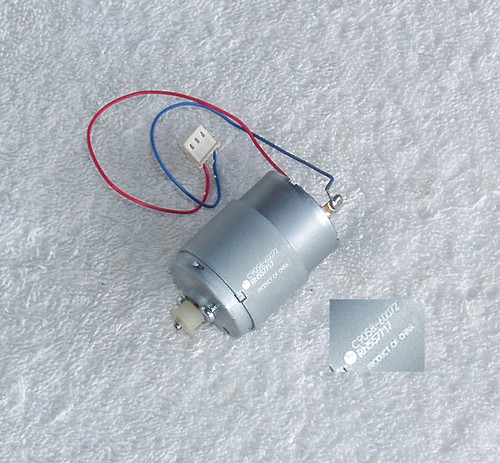Absolutely it is in "poor - unrestored" condition but I am a great believer in repurposing equipment or sometimes (if feasible) complete restoration of vintage electronic equipment.
Make no mistake, in it's present form this is one very ugly duck!
HISTORY:
This audio power amplifier is part of a complete Australian designed and manufactured 16mm film projection system from the early 1950's.
The designer/manufacturer was Harmour & Heath, an Australian company based in North Sydney NSW.
I will also be advertising the film projector and associated power supply very shortly in a separate advertisement.
So the equipment setup was like this:
Film Projector
Film Projector Power Supply
Audio Amplifier (it has its own power supply, it works "stand alone")
The first two items work together, they need each other (don't we all?) but the audio amplifier can stand proud by itself.
I will split the system up, i.e just the audio amplifier OR with the 16mm film projection system.
LETS SET THE SCENE
It's the very early 1950's and WWII has just finished 5 years back. It was very difficult to get anything imported and raw materials to make anything were difficult to obtain because everything went into the "war effort" just a few years prior. For example, climb up into an old 1950's - 60's house roof space and very often you will find "offcuts" were used in the roof construction - timber was scarce, everything was scarce!
This encouraged local innovative businesses to design and make their own products, the 16mm film projector/audio amplifier was one such product. Australian ingenuity, design and "cleverness"
On with the description...
Single Channel Audio Power Amplifier
Two 807's output tubes - most likely its a push-pull design running in Class AB1 with around 20 - 40W RMS audio output
Harmour & Heath (Sydney NSW)
Early 1950's
This has NOT been in private hands, I obtained it from the "Government Stores" many years ago - see the photograph of the product tag which is still attached to the 16mm film projector. You don't see tags with O.H.M.S any longer - On His Majestys Service (King George VI was our king at this time) In the 1950's, the government stores kept an inventory of products which could be loaned by various government departments and then returned once finished with. They were usually well maintained by the government workshops.
My understanding is that this projection system/audio amplifier was disposed of simply because of technological advances but also spare parts for the film projector were becoming difficult to find by the 1970's
Unfortunately I did not really take great care in the storage of this equipment and it has suffered, its one ugly looking beast!
But beauty is in the eye of the beholder, I have seen one of the these amplifiers completely restored and used "on stage" as a guitar amp head! It is certainly unique for that purpose.
But if restoration is not your thing, this amplifier has some very useful, vintage components - especially those valves and the transformers.
Useful/possibly useful components:
IRC (Old Australian made) chassis mount wire wound resistors
Henderson transformer - I suspect this provides the HT only as it goes directly to the rectifier
Unbranded transformer (large sitting on top) - this seems to be just 6.3V supply for the heaters (or is it 5V?) as a secondary winding goes directly to the heater pins on a nearby valve and also the front panel incandescent "ON" lamp
Unbranded transformer (silver paint, sitting on top) - this would have to be the audio output transformer
Obvious oxidising of the top on the two "above chassis" transformers but on closer inspection this doesn't appear to be too serious and definitely no signs of a catasphofic failure causing winding burn-out.
Without getting right inside the components I found it very difficult to locate and trace the various secondaries so the above is more guesswork than anything.
The valves are very good for audio work, used commonly these days in valve amplifiers, particularly guitar amps
Rectifier 5V4 Mullard (this is the only "foreign valve" as it seems to have Made In USA stamped on the base)
Power Output 2x 807 Philips Australia
Driver/Input 3x 6J7G Philips Australia
All valve "top hats" are secure (not loose) as is all the bakelite bases.
Octal pins at the base are all clean/shiny and the top hat connections have just a little oxidisation but can easily be cleaned up.
All valve identification is easily readable, the toughest is the 5V4 because it is a bit faint.
Definitely useless parts:
Very old carbon resistors (probably way off value)
Can electrolytics (most likely dried up)
Various other capacitors such as the wax coated and other very dubious looking capacitors underneath the chassis.
The AC input power lead was a VERY OLD rubber insulated lead (falling apart) so I have removed the lead but left short "tails" on the tag strip so the AC input connections can be easily identified.
In fact a lot of the insulation used in the point to point wiring is rubber insulated, not plastic.
The case is very easy to access from both underneath (4 screws) or to remove the top cage (also 4 screws)
Construction is totally steel - this is a pretty heavy piece of equipment for its size (11Kg)
Dimensions: 310mm wide x 160mm deep x 230mm hight
The valve population is pretty compact, I suspect that when running, this amplifier would have made a nice heater as well!
One side of the case has the inputs - coming from the 16mm projector and also auxiliary such as a radio
The opposite side of the case has an octal socket for the speaker output connection.
No plastic here! The three front panel knobs are bakelite with grub screws and not damaged or broken
All valve sockets are also bakelite, one has a top piece broken off but the socket remains useable.
Interesting shield around the first input valve (6J7G) - it looks to be something like Mu metal, is two halves and uses a spring clip to hold it all together - this completely shields the valve from the outside world, electromagnetically.
Sitting behind the small hole in the front panel is the "ON" indicator, a standard 6.3V screw in bulb
CONDITION:
Obvious oxidisation to the case and top of the chassis BUT this is superficial, there is no depth to the oxidisation and it should clean up really well. The original finish was baked enamel.
There is NO damage to the case, no dents or bits missing.
TESTING:
There has been no testing undertaken at all.
I have sold my AVO valve tester so the valves are untested for shorts/emission etc.
With all those dubious caps etc it would be extremely unwise to "fire up" this amplifier in it's present state, even with a lower AC input via my Variac. This means I am offering this equipment COMPLETELY UNTESTED but hopefully the information above will enable an informed decision to be made about its suitability to the buyers purposes.
My original plan was to strip back the chassis, repaint everything, fit new ceramic valve sockets and then start rebuilding the amplifier with as many of the original components as possible. In my dreams this would be an incredible piece of gear with substantial Australian history.
It was not to be ... time is my enemy so I am hoping someone else can take on the task of giving this amplifier a new life OR for it to become an "organ donor" for other equipment or a custom project.

















